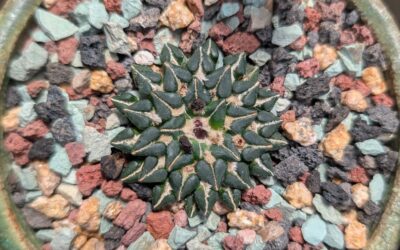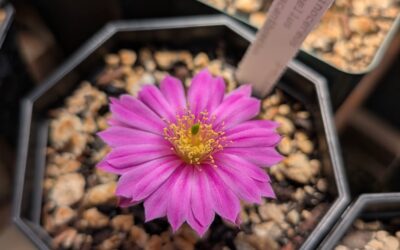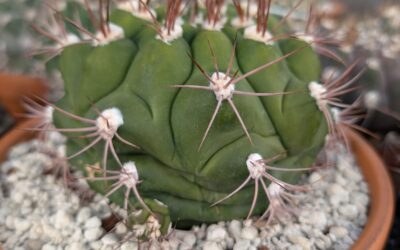I am, of course, obsessed with the Gymnocalycium genus. As a part of that, I have a habit of picking up pairs of species I haven’t seen before any time I spot them.
Gymnocalycium andreae is no exception. I spotted these as small plants at Grigsby’s cactus gardens, already looking like they might be making blooms. My cell reception wasn’t great, so I snagged a few without looking up the species, just happy to find a new cactus I hadn’t seen before.
These are an enchanting little species that blooms prolifically and is extremely easy to grow. They’re also quite cold-hardy, tolerating drops to well below freezing, although mine don’t often experience that. I have had the joy of successful pollination, and have multiple years of seedlings as well as my original plants to draw my recommendations from. If you’re looking for a small cactus that blooms easily and just about anyone could grow – this is it!
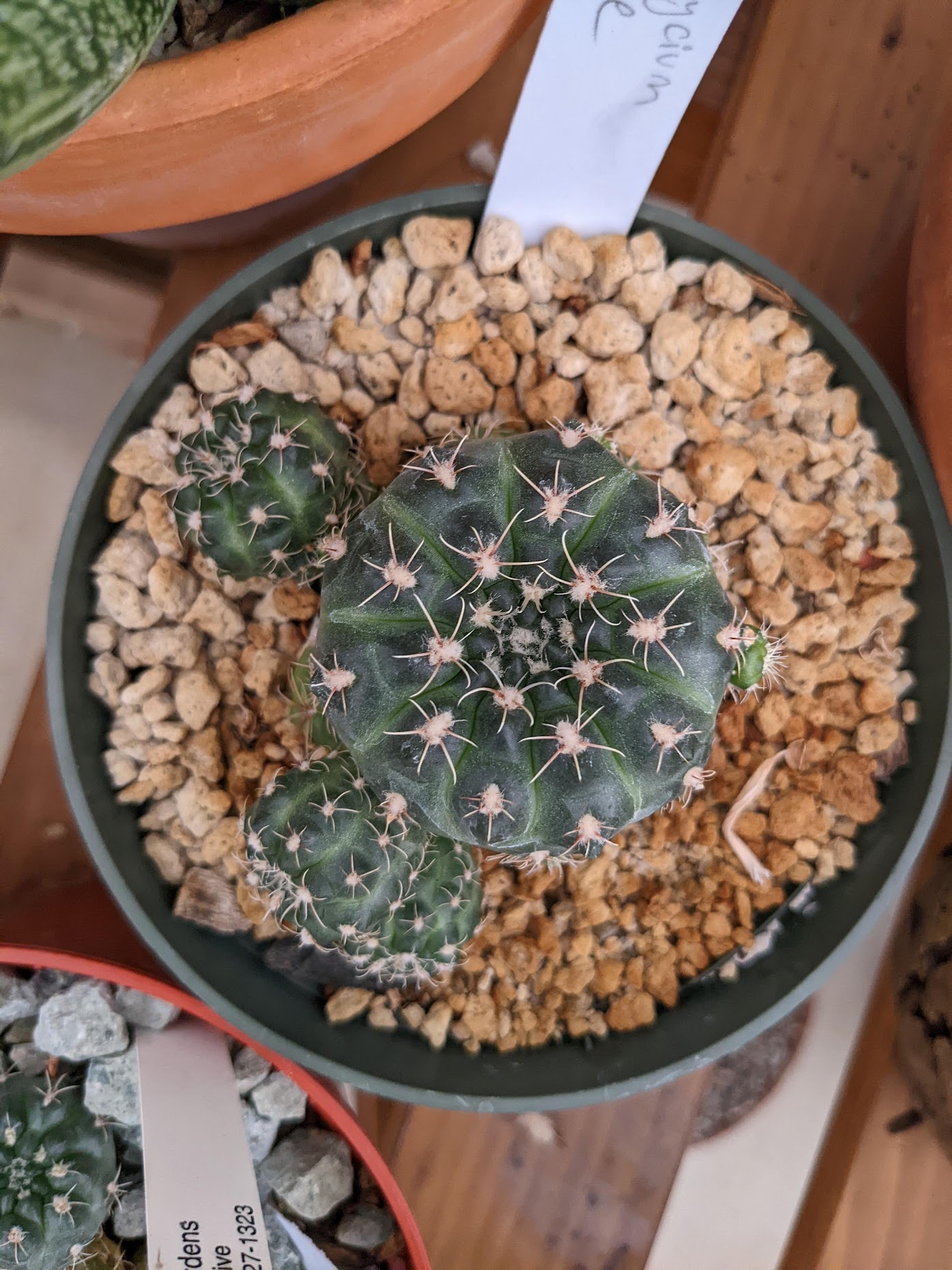
Soil
As with all cacti, it begins with how you have them potted.
I have mine in a nice porous mix, about 50% pumice with 50% run-of-the-mill cactus soil. They seem tolerant of just about anything; seedlings do well in a similar mix, or in one that’s 100% cactus soil. As long as it drains readily and they don’t stay too soggy, they seem to do fine.
In habitat, they grow both in rocky crevices or in rich humus in grassy areas, so it’s easy to see why they’re so…easy.
If you do pot yours in 100% cactus soil, you should expect to need to water yours less than I may recommend here.
Water
These are thirsty little beasties during the heat and long days of summer, but in winter, you should plan to keep them almost entirely dry.
I’ve had mine through two summers now, and can say for certain – the more water you give them during peak growing season, the more they will grow. I actually under-estimated how much water they liked, and my first year, they got quite…squishy-looking. They grew out, rather than compactly up, and looked a lot like someone had taken a larger cactus and just pressed their thumb in the middle, making them convex in appearance.
At the time, they were in terra cotta pots, which allowed moisture to evaporate much more rapidly than plastic. I repotted mine into slightly larger plastic pots (as visible in the photo above) and they fared much better.
Fertilizer
These grow so easily, and so rapidly, that you almost don’t want to give them fertilizer to facilitate that growth.
They can, and do, benefit from a light feeding during their growing season. I definitely noticed a different in quantity of flowers between the year I fed them regularly (this year) and the previous year, when I didn’t.
A balanced 1:1:1 ratio fertilizer at half the strength recommended should do plenty. At the height of summer, I tried to fertilize every time I watered, but reality was more like every other time. This was more than enough!
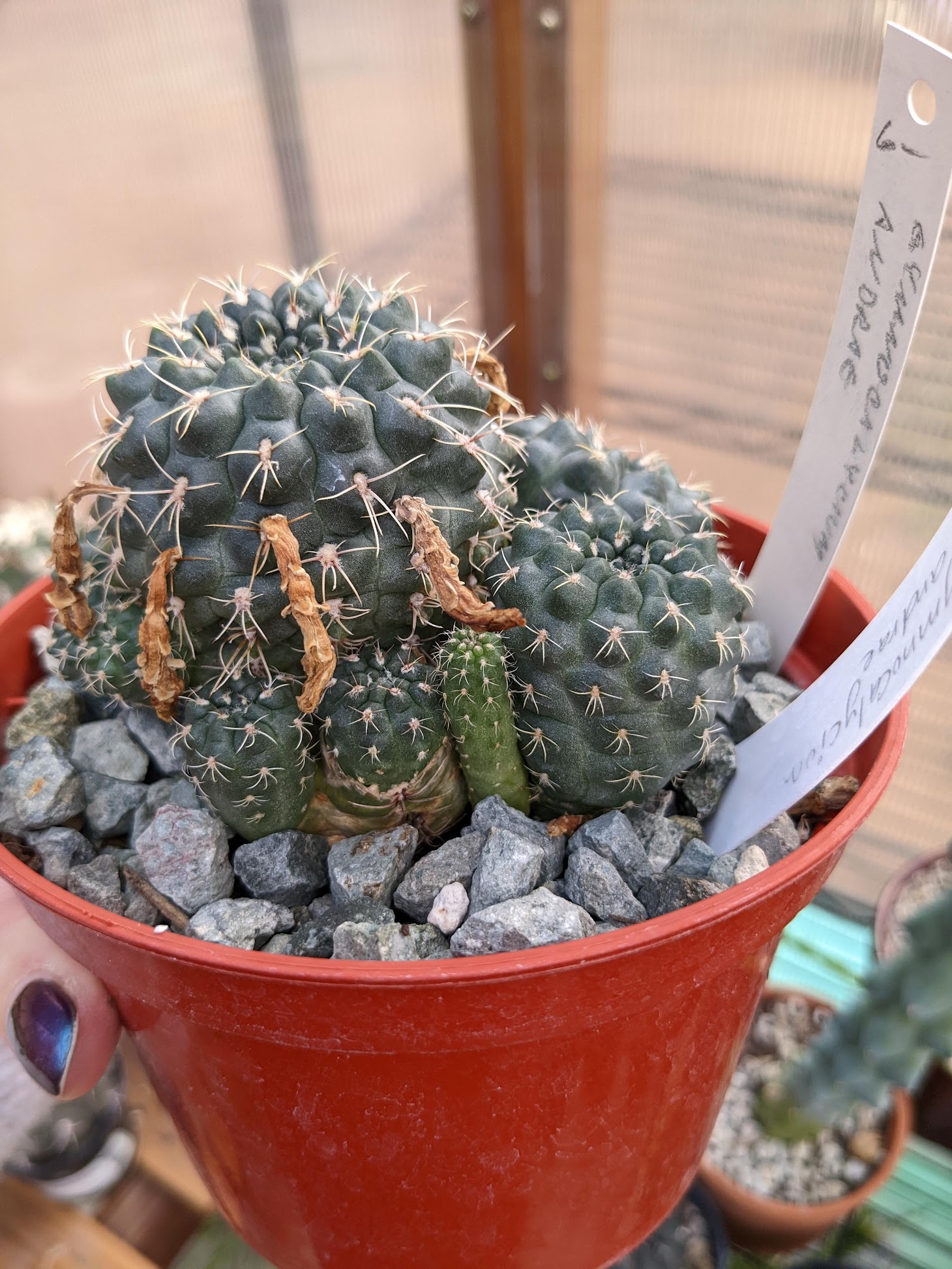
Light / Sun
These do best with shade in the peak afternoon hours, particularly if you’re in a more southern latitude. They also do well with light shade for the entire day. As long as they have a fairly bright location outdoors, they’re quite tolerant of a range of lighting conditions.
The brighter it is, the darker they’ll get, turning a sort of bronze-purple shade. This also encourages more intense spine production, as well as more profuse blooms.
I keep mine in my greenhouse, where they get 40% filtered light in summer, and now, during winter, they’re at full sun.
If you’re growing yours indoors, you’ll likely want them in as bright of an exposure as you can provide. Based on how rapidly they stretch, I wouldn’t suggest growing them indoors unless you have a very bright southern window or grow lights to help you.
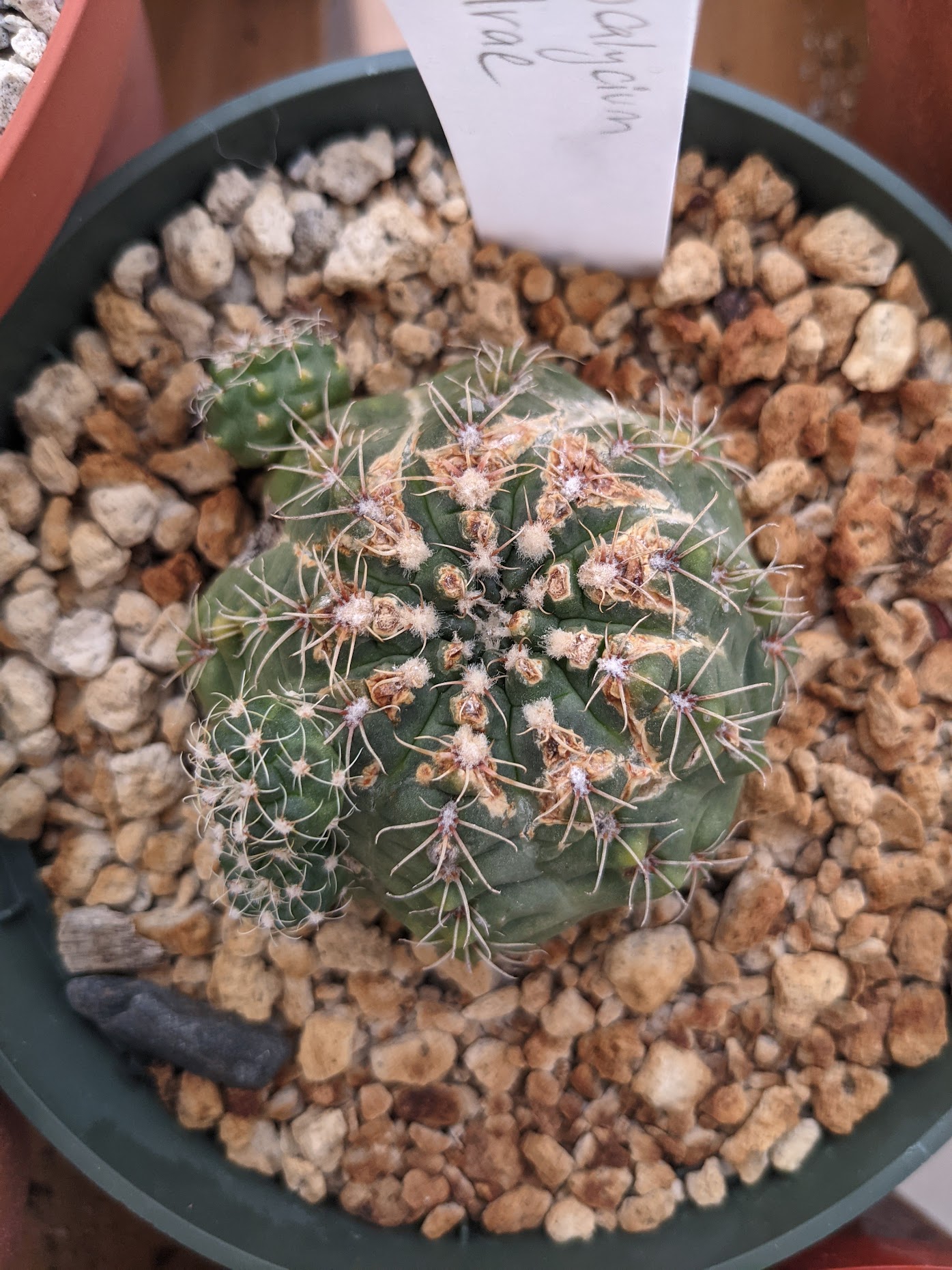
One of my plants in September 2021, after a bad bout with mealies through the summer
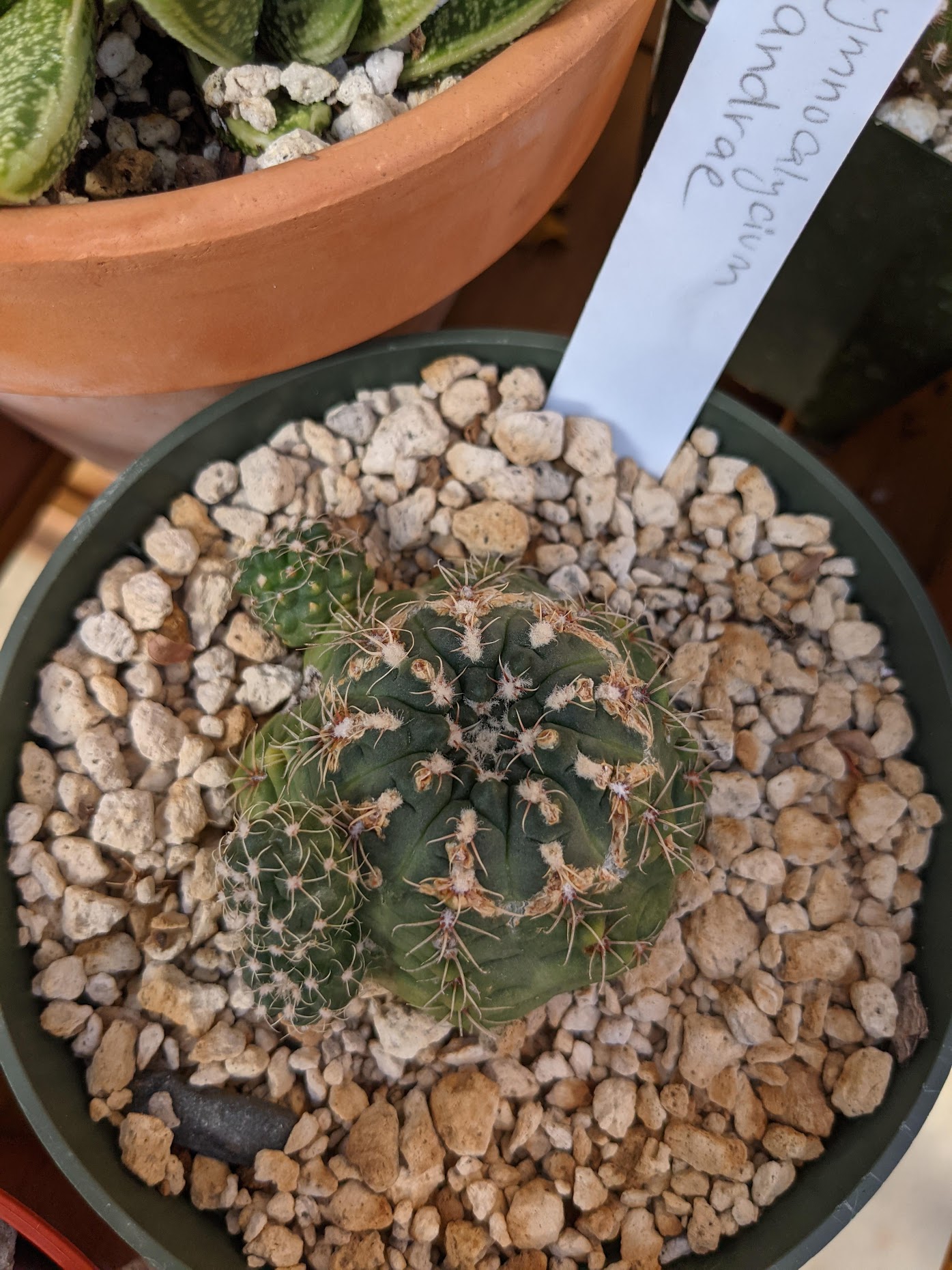
Same plant in November, mealies thoroughly treated.
Pests
These seem particularly susceptible to mealy bugs, or there were some hiding in mine when I brought them home. The one pictured above had particularly bad apical growth point damage, and took several rounds of treatment to cure.
I had the best success by using Talstar as a maintenance/preventative, and then a systemic pesticide that specifically said it worked on mealies. The Talstar is a residual pesticide that works by an insect walking through the pesticide and becoming affected; I use it as an ant preventative due to how bad our argentine ant problem is. I apply Talstar as a perimeter spray around my greenhouse every 3 to 6 months, depending on season/rainfall. It does also impact bees, so I limit it to inside my greenhouse and just as a barrier to ants, avoiding sprays on any plants that may bloom in the coming months.
For a systemic pesticide, I prefer the bioadvanced tree and shrub liquid pesticide. It lasts at least 2 weeks, which is usually enough to knock out the initial mealies and any newly hatching babies, and because it’s so quick to flush from the system, I’m much more comfortable spraying it on plants that might bloom in coming months. I do avoid spraying flowers or possible blooms just to ensure bees, butterflies, or hummingbirds aren’t impacted.
If there’s aphids or mealies on my plants and they’re actively blooming, I’ll use Captain Jack’s or Neem Oil to make a dent in the bugs without harming natural pollinators.
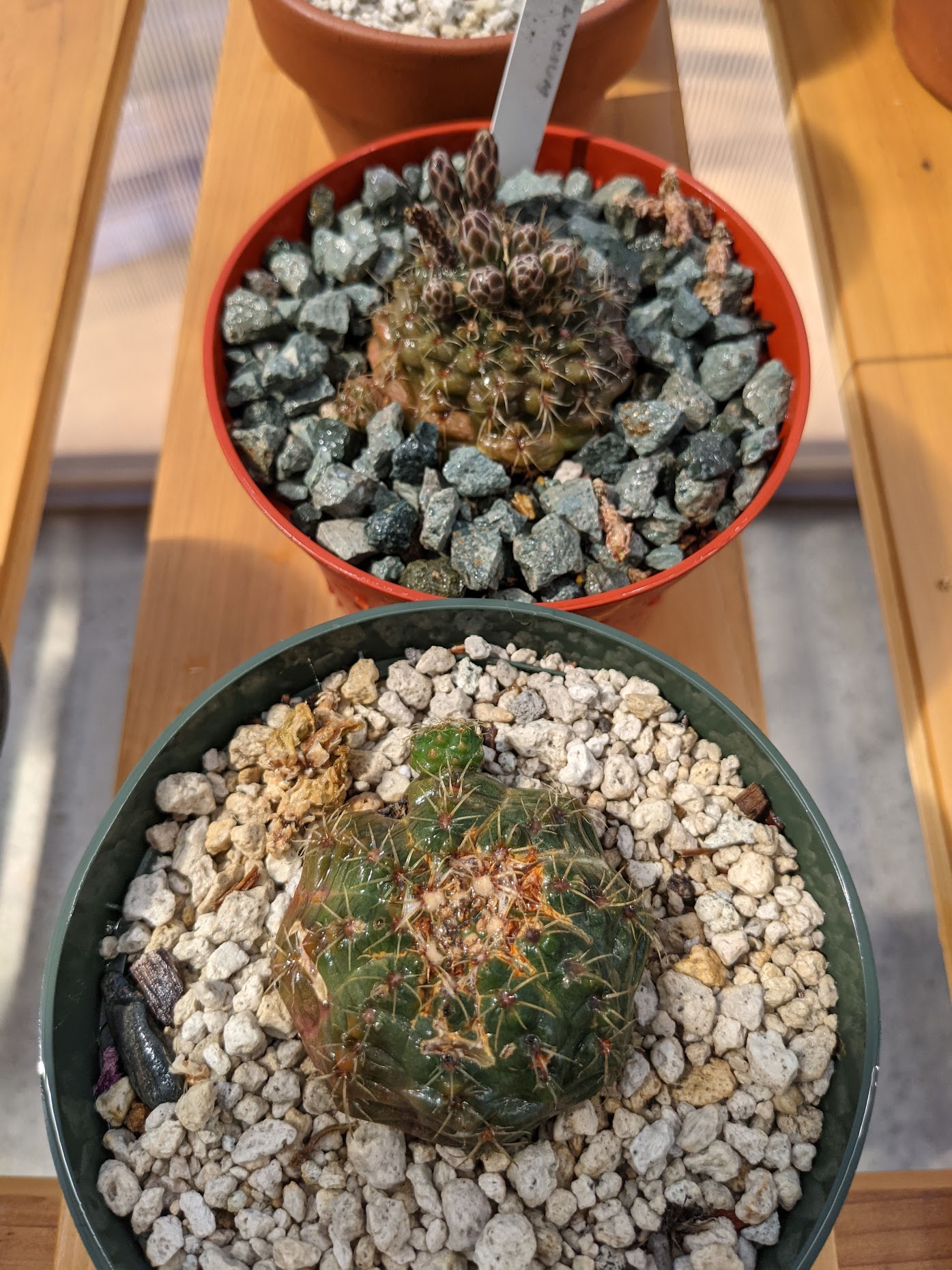
Both of my Gymnocalycium andreae in July 2021, freshly moved into the greenhouse and really in poor shape. Even with over-exposure to sunlight, under-watering, and severe mealy damage, they kept trying to bloom!
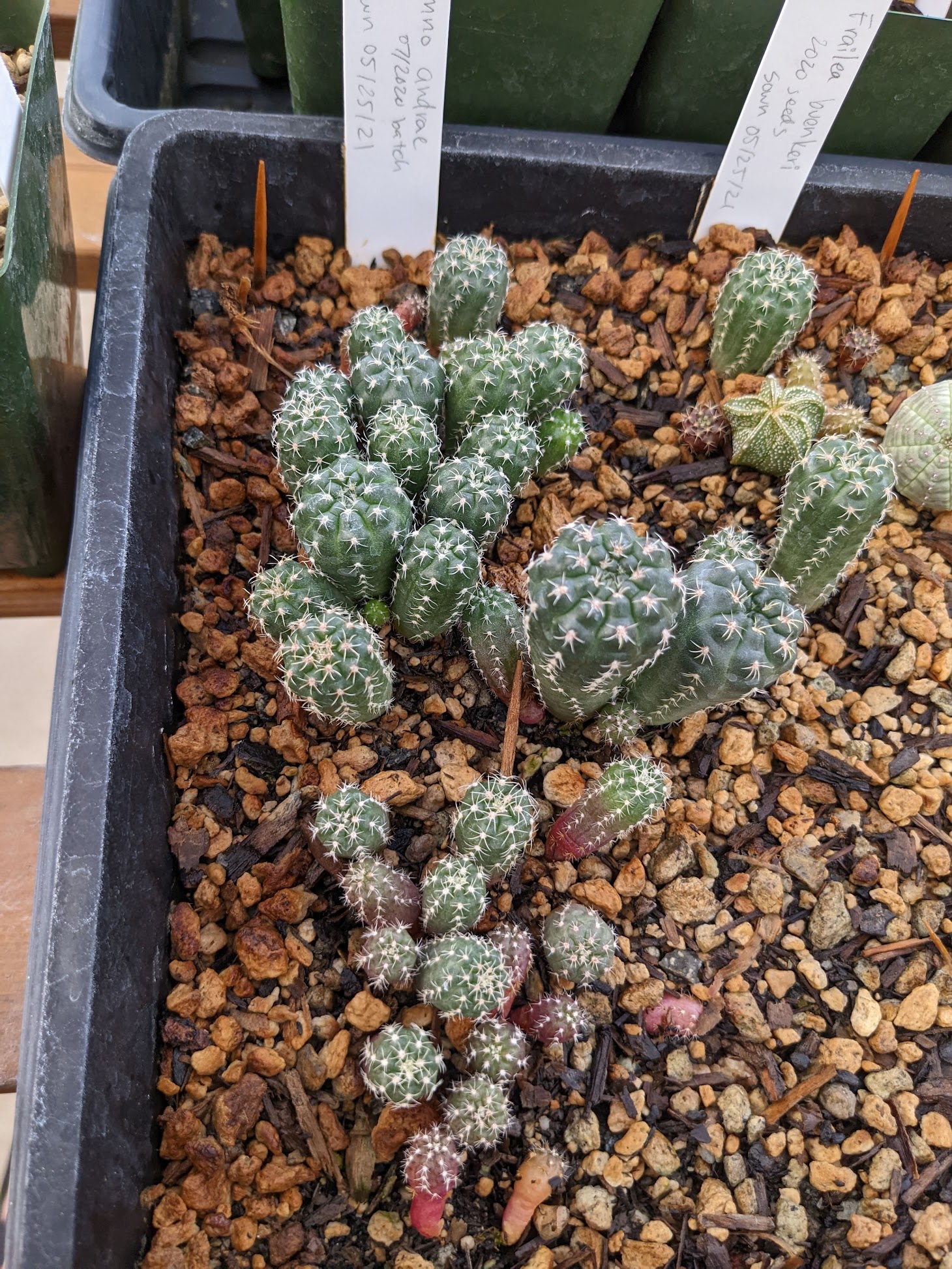
Growing Gymnocalycium andreae from seed
These are one of the easiest cacti to grow from seed I’ve ever encountered, right up there with Astrophytum.
Twice now I’ve collected seeds, and somewhat haphazardly, tried different methods of germination. They are hardy, easy, and almost insanely fast growing if given adequate light and water.
I am not planning to sow any in 2022, as I have batches from 2020 and 2021 that are growing out and will need to be potted up/moved in spring.
To grow your own seedlings, they just need a well-draining soil; I used my favorite 50% pumice and 50% cactus/succulent soil mix. I prefer to sterilize the soil by pouring boiling water over it about 30 minutes before I plan to start sowing, which serves the dual purpose of adding plenty of moisture to the soil and killing any potential fungus in it.
Sow your seeds over the top, scattering them at your whim or placing them carefully. I have better success when I let them fall, but you may be more meticulous than I am.
Once you’ve done this, lightly sprinkle play sand over the top. This gives the freshly germinated plant bodies something to brace against, while also not blocking too much light.
I then cover the top with Seran Wrap, taping it down to keep it taut and the humidity in. I place it somewhere sheltered but bright; usually inside by a south or west facing window. They germinate much faster if placed on a warm seedling mat.
I keep the humidity cover on until the seedlings are big enough that I can see the beginning of spines, then I uncover them but keep them indoors a little longer. In my case, I usually see them just starting to stretch, which indicates it’s time to move them out into the greenhouse. For yourself, you may want to consider a grow light (which I’ve used during cold springs to supplement on cloudy days), or moving them outdoors in a sheltered spot and keeping the seedling mat plugged in.
They should be large enough to move outdoors within 3 to 5 months given adequate conditions. I typically sow mine around February, and have them in the greenhouse by June.
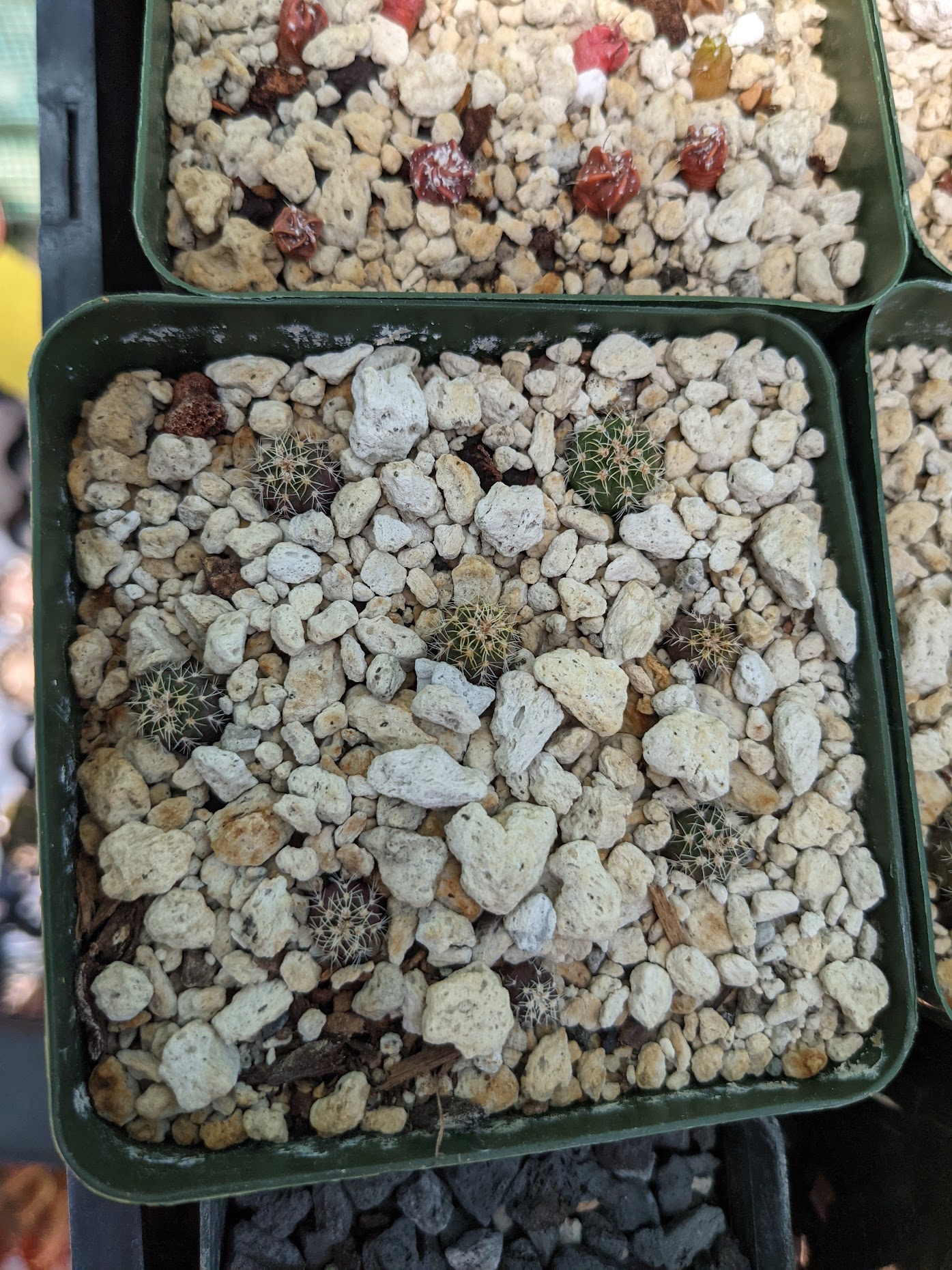
Pot of Gymnocalycium andreae seedlings sown in 2020, repotted and placed in my greenhouse in April 2021.
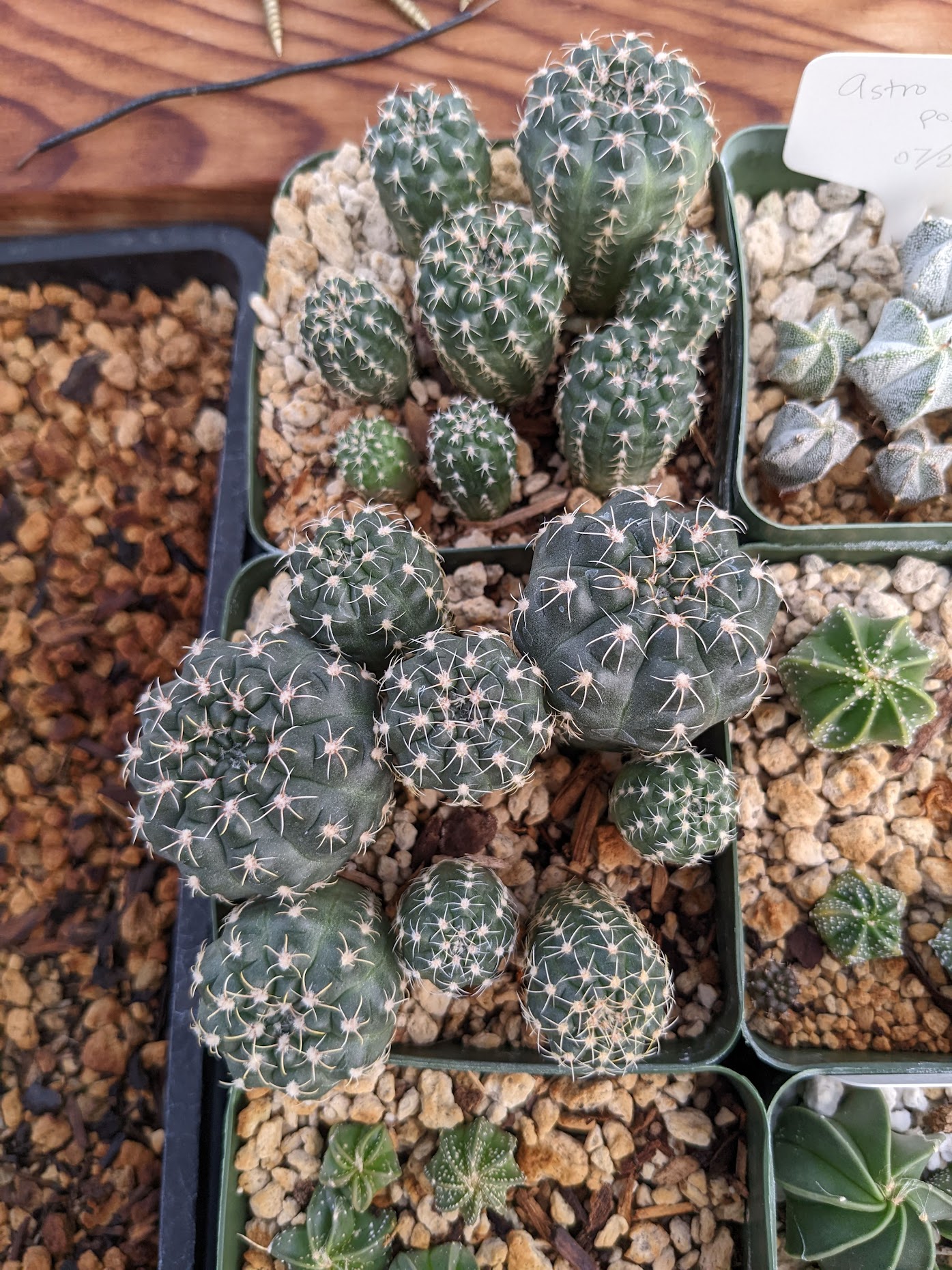
At least one of these is the same pot, but in December 2022. I’ll be dividing these pots in spring and offering the seedlings for sale.
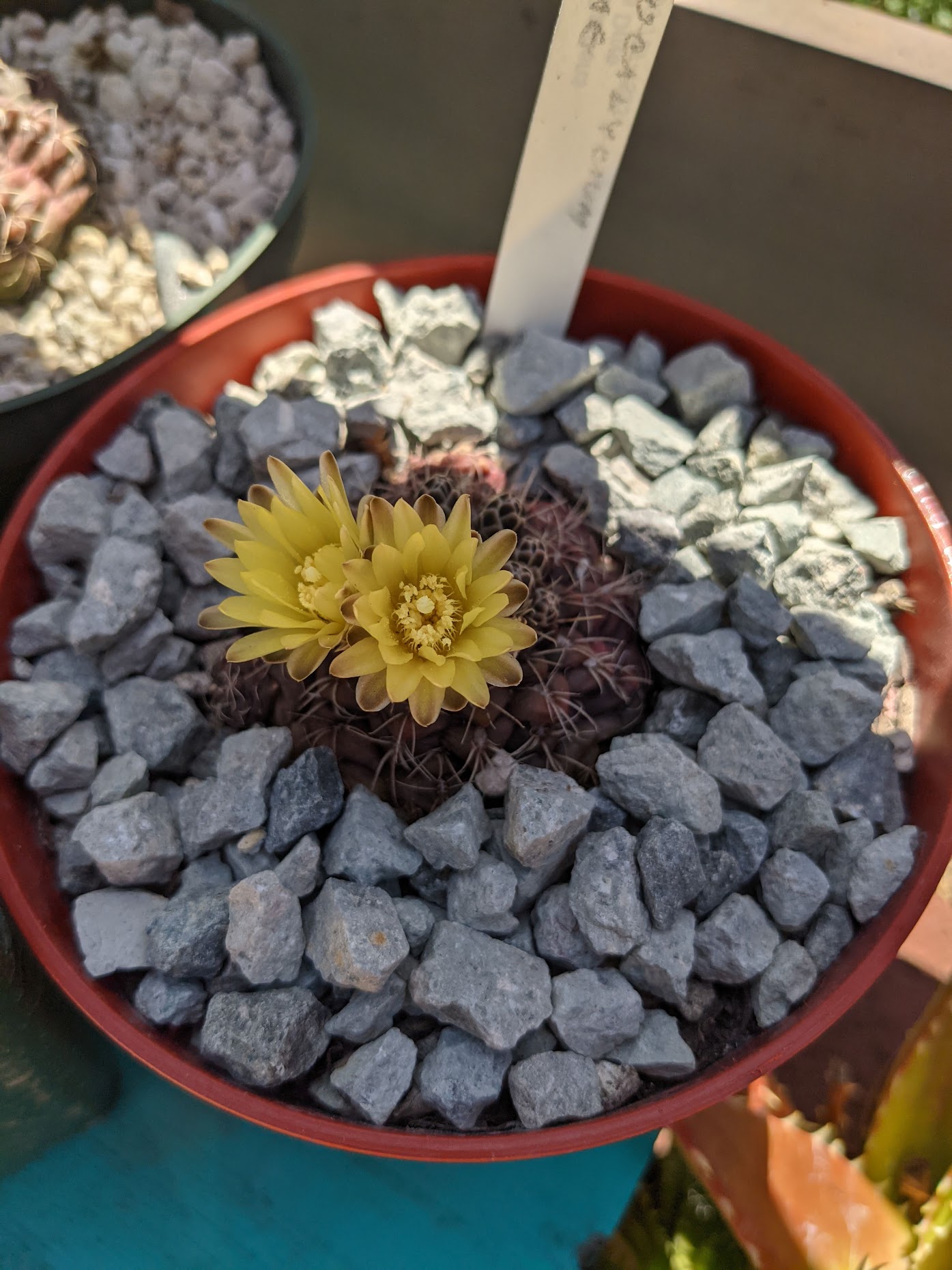
These cacti are delightful, easy to grow, and extremely resilient even if you mess up. Mine produced prolific blooms, even when battling mealybugs, and in less-than-ideal conditions, continued to grow and thrive. While they looked quite fugly for the first year, moving them to a more shaded exposure with better-draining soil had an immediate positive impact.
I have few to no photos of these in the first year I had them, almost entirely because they looked so bad from being in miracle grow, fast-drying terra cotta, and the severe mealy bug damage.
But after a year of better care and shelter, they hardly even look like the same plants! They’re clumping and growing, and I dare say they could benefit from more sunlight. I’m optimistic for plentiful blooms next spring, and for a new batch of seeds to sow!

